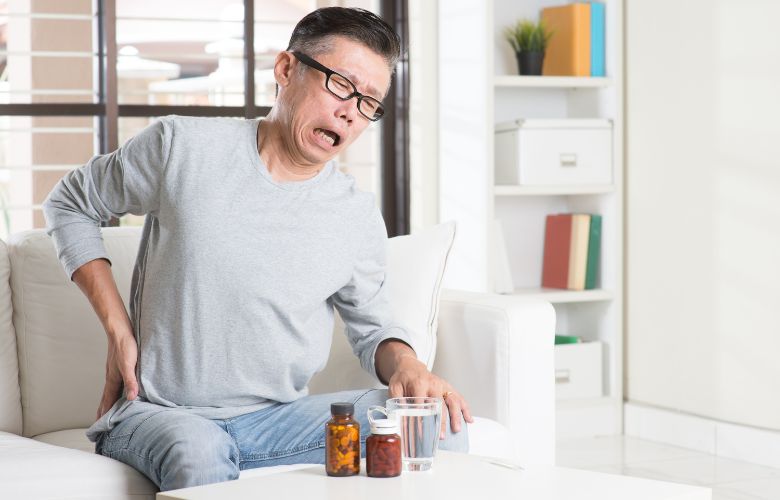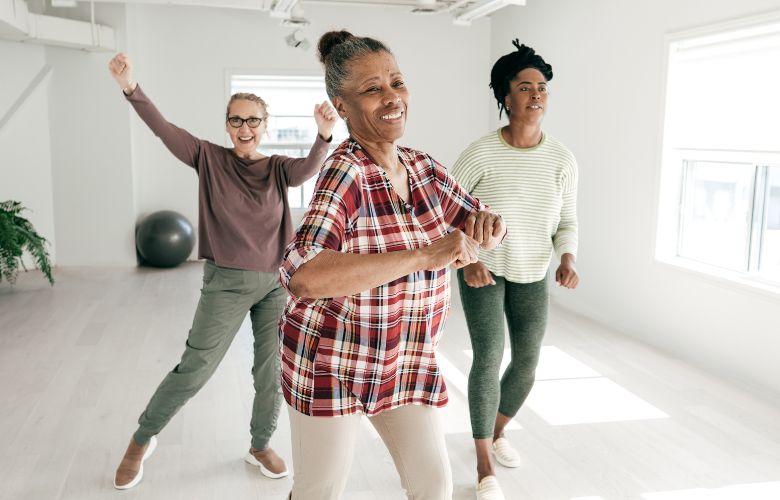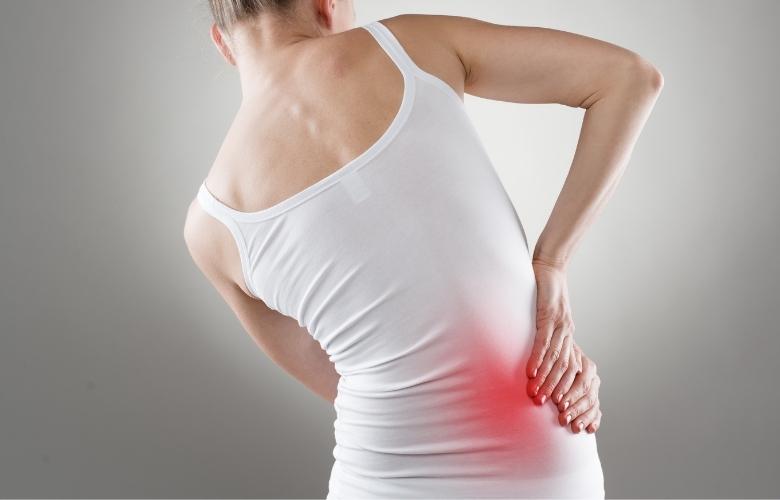As we grow older, we get prone to all kinds of medical conditions and diseases, and arthritis is one of the most common ones. That is because it affects the joints, which tend to get used the most over the years. Of course, like any condition that revolves around inflammation, it is not unusual to experience some kind of pain, and the one with arthritis can vary from barely anything to something unbearable.
Hip arthritis is a disorder that can make the hip joint painful, stiff, and less mobile. Daily tasks including walking, standing, and sitting may be challenging as a result. Hip arthritis cannot be cured, but there are numerous strategies to reduce pain and enhance the quality of life. In this response, we’ll go through some of the best methods for reducing hip arthritis pain, such as physical therapy, painkillers, exercise, and assistive technology. Hip arthritis patients can get relief and maintain an active lifestyle with the proper blending of these methods.
Causes of Hip Arthritis

Hip arthritis develops over time when the cartilage protecting the hip joint gradually deteriorates, resulting in discomfort, stiffness, and decreased mobility. There are a number of factors that can contribute to the development of hip arthritis, despite the fact that its precise cause is not entirely understood. The following are some of the most typical reasons for hip arthritis:
- Age: Our joints’ natural cartilage wears down as we get older, raising our risk of developing arthritis. In actuality, those over the age of 50 are most frequently affected by hip arthritis.
- Genetics: Hip arthritis may be a genetic predisposition in some individuals. According to studies, particular genes may contribute to the onset and progression of osteoarthritis.
- Gender: Hip arthritis is more common in women than in males, probably as a result of variations in hip structure and hormonal variables.
- Obesity: The hip joint is put under additional strain when you carry extra weight, which raises your risk of getting arthritis. This is because carrying extra weight might hasten the deterioration of the cartilage in the hip joint.
- Joint injury: An earlier hip injury, such as a fracture or dislocation, can make arthritis more likely to develop in later life. This is because the injury may weaken the joint’s bone or cartilage, making it more prone to deterioration.
- Developmental dysplasia: Hip arthritis may be more common in people who were born with an improperly constructed or positioned hip joint. This is due to the possibility that the aberrant joint shape will eventually result in uneven cartilage wear and tear.
- Other medical conditions: Hip arthritis is also more likely to develop in those who have rheumatoid arthritis, gout, or lupus, among other medical problems. These ailments lead to joint inflammation and can speed up cartilage deterioration.
Symptoms of Hip Arthritis:

The symptoms of hip arthritis can vary from person to person, but some of the most common symptoms include:
- Pain: Hip arthritis can result in hip pain that radiates to the buttock, thigh, or groyne. The discomfort, which may be subtle or acute, can be made worse by activity or by spending a lot of time sitting or standing.
- Stiffness: A frequent sign of hip arthritis is stiffness in the hip joint. When moving gently or stretching, the stiffness may become less severe. It may be stronger in the morning or after extended periods of inactivity.
- Reduced range of motion: Hip arthritis can result in a decreased range of motion as it worsens. As a result, it could be challenging to engage in hip-bending or hip-twisting motions, such as putting on shoes or getting in and out of a car.
- Grinding or popping sensations: When they move, some patients with hip arthritis may feel a popping or grinding feeling in the hip joint. The cartilage or bone in the joint may have become roughened as a result.
- Weakness: Weakness in the muscles surrounding the hip joint due to hip arthritis is a possibility. As a result, it could be challenging to carry out actions that call for strength, including climbing stairs or moving heavy objects.
Diagnosis
» Look How Physical Activity Can Help You Deal With Pain Click Here
Some of the most common types of arthritis include osteoarthritis, rheumatoid arthritis, and psoriatic arthritis. Arthritis can be challenging to diagnose as it shares symptoms with other conditions, making it important to consult a medical professional for a proper diagnosis. When it comes to the hip arthritis procedure for diagnosing, X-rays, blood tests, and the analysis of synovial fluid are the optimal choices. While there is no cure for hip arthritis, there are several ways to ease the pain and improve quality of life. Here are some tips for easing the pain from hip arthritis:
If you are feeling any symptoms of arthritis, consult with a doctor.

- Pain medication: If you happen to be experiencing severe pain in your joints, especially in hip arthritis, then taking pain medication is the best way to relieve yourself from pain. You can get over-the-counter pain medication such as acetaminophen and NSAIDs. When over-the-counter pain relievers are not enough to manage the pain and inflammation associated with hip arthritis, a doctor may prescribe stronger medications or injections to help alleviate symptoms.
- Arthritis medication: In case your levels of pain are not that progressed, and if you happen to be in the early stages of arthritis, it is suggested that you get medication that will slow down the progression of the disease. Since there is, unfortunately, no cure for arthritis, your doctor is probably going to prescribe you some corticosteroids or hyaluronic acid injections.
- Physical therapy: Before the disease progresses, it is a good idea to get familiar with physical therapy, and if your doctor thinks that it is necessary for your condition, you should participate in a program as well. During these sessions, if you happen to have some specific mobility problems, they will be assessed by a team of professionals.
Each exercise that is done at physical therapy is carefully thought to you, so you can easily repeat it at home when necessary. Of course, physical therapy is only there to help you with slowing down the condition, and it is not going to stop it from progressing completely. - Exercising: If the disease has not progressed far enough, and if you are feeling some kind of pain but you do not feel like or cannot take any medication, you might be surprised, but the best way to deal with such pain is to start exercising. Various exercises are known to help manage symptoms caused by arthritis, especially the one that affects the hip joint. It is a good idea to start doing exercises such as yoga, swimming, water aerobics, and strength training.
You can also try some simple exercises that focus on stretching, such as the sitting hip flexion, the sit-stand, hip opener, forward fold, and other exercises that focus on muscles around your affected joint. If you are not sure which exercises are the best, then consulting with someone who is familiar with physical therapy is often a good idea. - Hot and Cold Therapy: Applying heat or cold to the affected area can help alleviate pain and stiffness. A warm bath or shower, heating pad, or hot water bottle can help soothe sore muscles and joints. Cold therapy, such as ice packs or frozen vegetables wrapped in a towel, can help reduce swelling and inflammation.
⇒ Eye Pain: What Are the Causes & Treatment? Click Now
Exercise can help with pain caused by arthritis. - Weight management: Keeping a healthy weight is essential for controlling hip arthritis since carrying extra weight places additional strain on the hip joint, which can exacerbate symptoms and eventually harm the joint. A healthy weight can be attained and maintained by eating a balanced diet high in fruits, vegetables, whole grains, and lean protein. Limiting processed and high-fat foods are also crucial because they can cause weight gain and the body to become inflammatory.
Regular exercise is essential for controlling hip arthritis because it keeps joints flexible, strengthens muscles, and enhances mobility. Exercises with low impacts, such as walking, cycling, and swimming, are best for those with hip arthritis because they don’t place as much strain on the joints. Water aerobics, yoga, and tai chi are a few more forms of exercise that are beneficial. - Assistive device: Canes and walkers are examples of assistive equipment that can be useful in easing hip joint stress and enhancing mobility. Based on a patient’s specific needs, a healthcare professional might suggest the best assistive technology. For instance, using a cane when walking can help rebalance weight away from the hip joint and lessen pressure on the joint. Particularly for people who have trouble balancing or walking for long periods of time, a walker can give support and stability.
Other adjustments can be made to lessen stress on the hip joint in addition to assistive technology. When doing daily tasks, utilizing an elevated toilet seat or shower chair, for instance, might help lessen stress on the hip joint. Additionally, using a shoe insert or cushioned insole when walking might assist ease the stress on the hip joint. - Surgery: When it comes to the best way to relieve yourself from pain caused by arthritis, there is no better solution than to undergo replacement surgery. At places like Mid North Coast Hip & Knee Clinic, there are many patients who undergo hip and knee replacement procedures as their joints were destroyed by the disease.
Upon undergoing surgery, you will receive a new artificial joint that is not affected by the disease anymore. Of course, it will not be as strong as your original joint, but you will feel no pain, and you will be able to do everyday activities more easily.
It is important to note that the procedure, while not complicated, does come with some recovery time. During this time, you will have to get some time off work, and you will need to go through physical therapy in order to regain your strength fully.
Visiting A Chiropractor Can Solve Various Pain Problems Click Here
Lifestyle Changes to Manage Hip Arthritis

Hip arthritis cannot be cured, but there are a number of lifestyle modifications that can help manage symptoms and enhance the quality of life. Here are a few lifestyle modifications that can help with hip arthritis management:
- Exercise: One of the most crucial lifestyle adjustments for controlling hip arthritis is exercise. Swimming, cycling, and walking are examples of low-impact workouts that can preserve joint flexibility, build muscle, and lessen pain and stiffness. Before starting a fitness program, it’s crucial to speak with a healthcare professional to be sure it’s safe and suitable for your particular needs.
- Weight management: In order to manage hip arthritis, it’s crucial to keep a healthy weight because carrying extra pounds can strain the hip joint and worsen pain and inflammation. A healthy weight can be attained and maintained with the help of a healthy, balanced diet and frequent exercise.
- Physical therapy: Physical therapy can help with hip arthritis management by enhancing joint mobility, enhancing muscular strength, and minimizing pain and stiffness. A physical therapist can create a specialized treatment plan for you that includes stretches and exercises catered to your unique requirements.
- Modifying daily activities: Changing routines can ease pressure on the hip joint and increase mobility. For instance, For example, using a reacher to pick up objects instead of bending over can help reduce strain on the hip joint.
- Assistive devices: Canes and walkers are examples of assistive equipment that can be useful in easing hip joint stress and enhancing mobility. Based on a patient’s specific needs, a healthcare professional might suggest the best assistive technology.
- Rest and relaxation: As it enables the body to recuperate from inflammation and stress, rest and relaxation might be beneficial in controlling hip arthritis. Exercises that encourage relaxation, like yoga or meditation, can also help lower stress and enhance general well-being.
- Avoiding high-impact activities: Running and jumping can place additional strain on the hip joint and exacerbate the signs of hip arthritis. It’s crucial to stay away from these things and opt for low-impact exercises.
Final word
Arthritis is quite a common disease, and knowing how to handle the pain and keep on doing your daily activities is essential. It is important to keep your attitude positive, as having a healthy mind will keep your body strong and will slow down the progression of the disease.
Many have been known to live out their whole lives while suffering from arthritis, but if it gets to the point where the pain is unbearable or where you are no longer capable of putting any pressure on the joint, surgery is always an option, thanks to modern medical advances.


